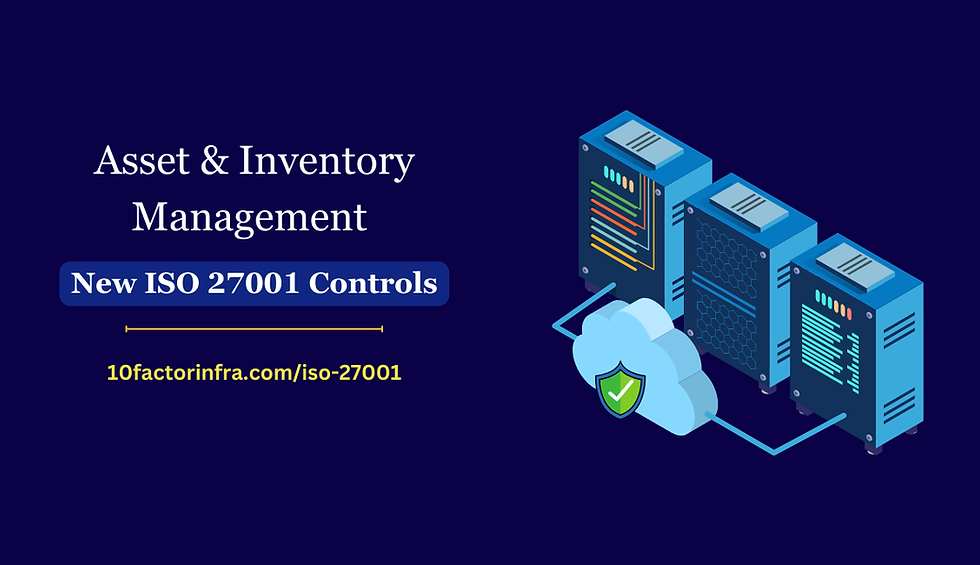How Does ISO 27001 Impact Software Development?
- Kamalika Majumder | DevOps & ISO 27001 Consultant

- Jul 25
- 3 min read
Updated: Jul 28

ISO 27001, the international standard for information security management systems (ISMS), plays a critical role in shaping software development practices.
It provides a structured framework for ensuring that security is embedded throughout the software development lifecycle (SDLC). Organisations aiming for ISO 27001 certification must implement controls that mitigate security risks, protect sensitive data, and ensure the integrity of software applications.
From a development perspective, ISO 27001 influences coding practices, security policies, access controls, and risk management approaches. Developers must adhere to secure coding principles, ensuring that applications are resilient against vulnerabilities like SQL injection, cross-site scripting (XSS), and buffer overflows.
Furthermore, organisations must establish clear policies for software maintenance, version control, and incident response to comply with ISO 27001 requirements.
What’s in it for Build & Deployment Processes?
Build and deployment processes are crucial in the software development lifecycle, and ISO 27001 enforces several measures to ensure their security. The standard mandates:
Controlled Access to Build Environments: Only authorised personnel should have access to the build and deployment environments to prevent unauthorised changes.
Integrity Checks: Implementing checks such as cryptographic hashing and digital signatures ensures that code and binaries remain unaltered during deployment.
Automated and Secure Deployment Pipelines: Continuous integration/continuous deployment (CI/CD) pipelines should incorporate security scans, vulnerability assessments, and automated testing to detect issues early.
Version Control & Change Management: Every software update must be logged, reviewed, and approved to maintain traceability and accountability.
Rollback and Recovery Plans: Organisations must maintain rollback procedures to restore previous versions in case a deployment introduces security flaws.
By following these principles, organisations reduce the risk of introducing vulnerabilities into production environments while ensuring compliance with ISO 27001.
What Does ISO 27001 Say About Testing?
ISO 27001 emphasises the importance of rigorous software testing to mitigate security risks. It requires organisations to establish a formal testing process that includes:
Security Testing: Regular security assessments, including penetration testing and static/dynamic code analysis, must be conducted to uncover vulnerabilities.
Functional and Performance Testing: Applications must be tested for correctness and efficiency to prevent logic errors that could introduce security loopholes.
Automated Testing Frameworks: Continuous testing should be integrated into the development lifecycle to catch security defects early.
Separation of Testing and Production Environments: Testing should take place in isolated environments to prevent accidental data leaks or corruption of live systems.
Compliance Testing: Software should be evaluated against ISO 27001 and other regulatory requirements to ensure adherence to security standards.
The ISO 27001 Controls for Software Development
The older 2013 version already had specific controls for software development lifecycle:
Secure system architecture and engineering principles (A.8.27): Principles for engineering secure systems shall be established, documented, maintained and applied to any information system development activities.
Security testing in development and acceptance (A.8.29): Security testing processes shall be defined and implemented in the development life cycle.
Separation of development, test and production environments (A.8.31): Development, testing and production environments shall be separated and secured.
The 2022 revision of ISO 27001 introduced several new controls that further enhance security in software development processes. Key updates include:
Configuration Management (A.8.9): The new standard requires organisations to implement robust configuration management processes to prevent misconfigurations that could lead to security breaches.
Monitoring for Anomalies (A.8.16): Developers must integrate logging and monitoring capabilities into applications to detect unusual activity and potential security incidents early.
Secure Coding Practices (A.8.28): This control mandates organisations to adopt secure coding guidelines, enforce peer code reviews, and leverage automated security scanning tools.
Threat Intelligence (A.5.7): Organisations are encouraged to integrate threat intelligence into their development processes, identifying potential attack vectors before they become threats.
Cloud Security (A.5.23, A.5.30): Since many software applications are cloud-native, new controls address cloud security considerations, ensuring secure development, deployment, and monitoring in cloud environments.
These updates reflect the evolving landscape of software security, where new threats and vulnerabilities emerge rapidly. By aligning development practices with these controls, organisations can enhance the security of their applications while maintaining compliance with ISO 27001.
Conclusion:
ISO 27001 is not just a compliance requirement—it is a roadmap for building secure software.
From enforcing secure coding practices to ensuring the integrity of build and deployment processes, the standard provides comprehensive guidance on integrating security throughout the SDLC.
With the 2022 updates, organisations must adopt a proactive approach to security, incorporating secure coding, threat intelligence, and anomaly detection into their workflows.
By doing so, they can minimise security risks, protect sensitive data, and build robust software systems that stand up to modern cybersecurity threats.
Need to get ISO 27001 or SOC2 Compliant, but not sure where to start!
Thanks & Regards
Kamalika Majumder






